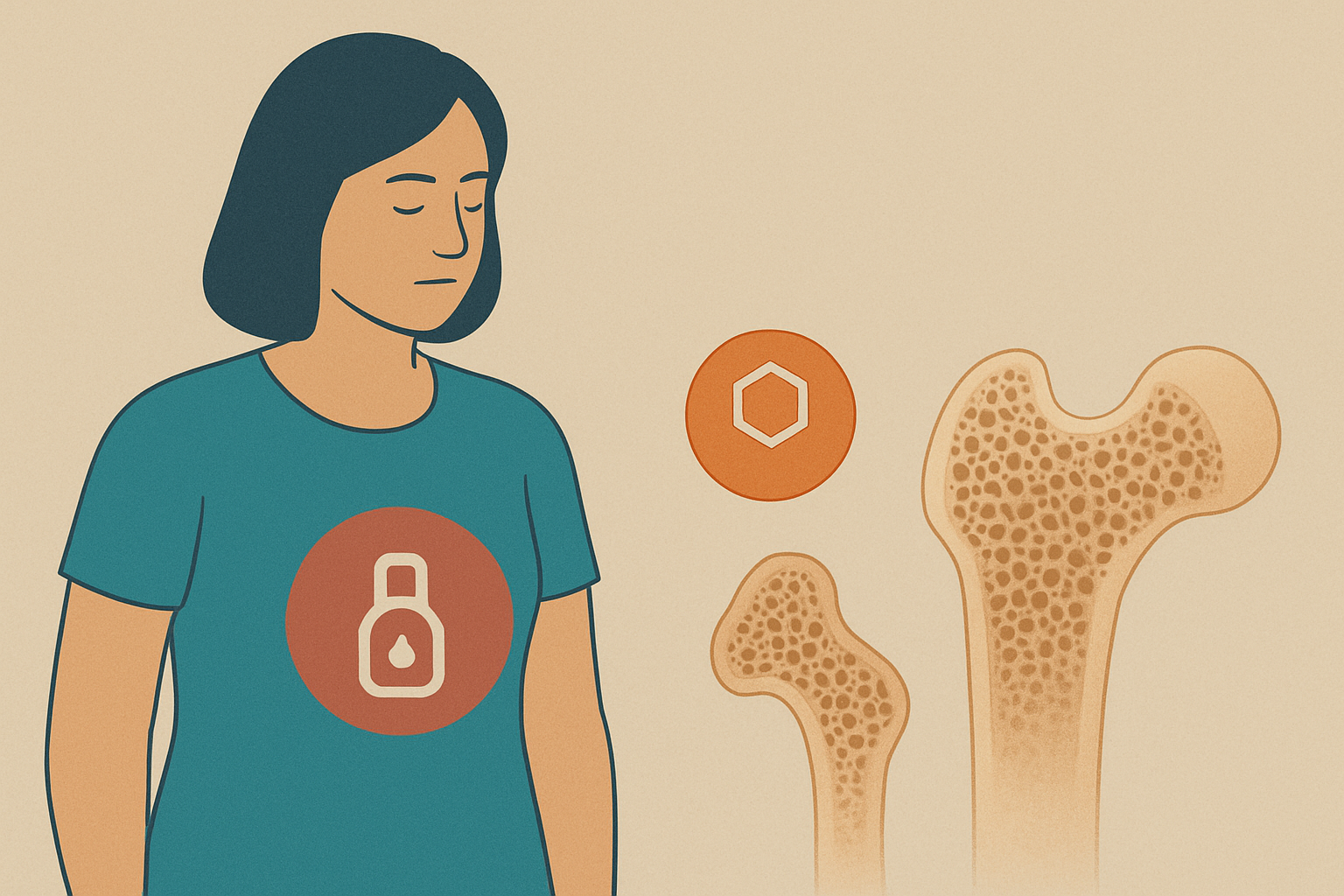
Women with type 2 diabetes face elevated risks of osteoporosis and fractures, potentially exacerbated by hyperglycemia and medications. Dipeptidyl peptidase-4 inhibitors (DPP4-Is) like sitagliptin may protect bone health by modulating bone metabolism and inflammation, but clinical evidence is sparse. The SLowDOWN trial evaluated the efficacy and safety of sitagliptin on bone mineral density (BMD) and related biomarkers in women with type 2 diabetes over 52 weeks.
This multicenter, phase III, double-blind, placebo-controlled trial randomized 132 women (mean age 66 years, HbA1c <7.5%, on stable metformin) to receive sitagliptin 100 mg daily or placebo. Participants, recruited from Sapienza University’s diabetes clinics in Rome, Italy, underwent dual-energy X-ray absorptiometry (DXA) for BMD at the lumbar spine and femur, alongside assessments of bone turnover markers (e.g., CTX, P1NP) and inflammatory cytokines (e.g., CXCL10, VEGF) at baseline, 24, and 52 weeks. Primary outcomes were changes in BMD T scores; secondary outcomes included DPP4 activity and inflammatory markers. Intention-to-treat (ITT) and per-protocol (PP) analyses used mixed-effects models, with significance at p<0.05.
Sitagliptin preserved total femur BMD T score (mean difference: −0.02; 95% CI: −0.07, 0.03; p=0.46), while the placebo group showed a significant decline (mean difference: −0.13; 95% CI: −0.19, −0.07; p<0.0001), yielding a significant between-group difference (0.11; 95% CI: 0.03, 0.19; p=0.0063). No significant changes occurred at other skeletal sites or in bone turnover markers. Sitagliptin reduced DPP4 activity (p<0.0001 at 24 weeks) and lowered levels of inflammatory mediators (e.g., CXCL10, VEGF) at 24 weeks. Glucose control remained stable across groups, with no serious adverse events; five mild-to-moderate adverse events were evenly distributed.
Sitagliptin preserved total hip BMD in women with type 2 diabetes, potentially via anti-inflammatory mechanisms, without affecting glycemic control. These findings suggest a protective role against bone loss, warranting further studies in higher-risk populations to confirm long-term benefits and fracture risk reduction.
Link: https://bmcmedicine.biomedcentral.com/articles/10.1186/s12916-025-04363-w

